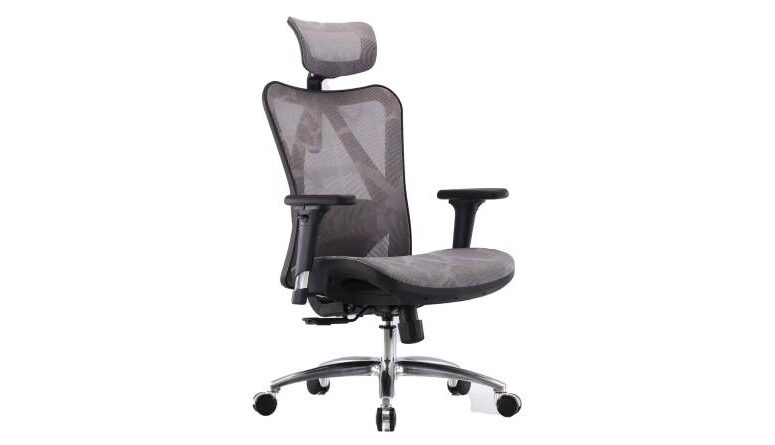
In today’s modern workplaces, where sedentary lifestyles are prevalent, the quest for ergonomic solutions has never been more crucial. Among the array of ergonomic seating options available, chairs like the Sihoo M57 ergonomic office chair stand out as a pinnacle of comfort and support. These chairs are not just another office furniture item; they are carefully designed pieces that prioritise comfort, support, and overall well-being. But what exactly makes them ergonomic? And how does it benefit your health? Continue reading and delve into the science behind ergonomic chairs to understand their significance.
What Makes a Chair Ergonomic?
Ergonomic chairs are engineered to support the natural alignment of the human body, particularly the spine. Unlike traditional chairs, which often force the body into awkward positions, ergonomic chairs promote proper posture and provide adjustable features to accommodate various body types and preferences.
Supporting the Spine: The Backbone of Ergonomics
At the core of ergonomic design is the emphasis on spinal health. The spine, composed of vertebrae stacked upon each other, supports the body and facilitates movement. Prolonged sitting in poorly designed chairs can lead to slouching, placing excessive strain on the spine and surrounding muscles.
Ergonomic chairs address this issue by offering lumbar support, which helps maintain the lower back’s natural curve. This support prevents slouching and reduces the risk of developing back pain or related musculoskeletal disorders.
Adjustability: Tailoring Comfort to Individual Needs
Another hallmark of ergonomic chairs is their adjustability. From seat height and depth to armrest position and tilt angle, these chairs provide users with various customisation options. This adaptability ensures that individuals can configure their chairs to suit their unique body dimensions and preferences, promoting optimal comfort and support throughout the day.
Promoting Dynamic Sitting: Movement is Key
While ergonomic chairs provide excellent support, they also encourage dynamic sitting. Unlike static sitting, where individuals maintain a fixed posture for extended periods, dynamic sitting involves subtle movements and adjustments that engage different muscle groups.
Features such as swivel mechanisms and flexible backrests allow users to shift their position easily and maintain circulation. This active sitting approach helps prevent stiffness and encourages better blood flow, reducing the risk of fatigue and discomfort associated with prolonged sitting.
Materials Matter: Comfort and Durability
The science of ergonomic chairs extends beyond their design to the materials used in their construction. High-quality foam padding and breathable fabrics ensure comfort during long hours of use, while sturdy frames provide durability and stability.
Furthermore, ergonomic chairs are often designed with sustainability, utilising eco-friendly materials and manufacturing processes. This holistic approach benefits the environment and contributes to users’ overall well-being by minimising exposure to harmful chemicals and promoting a healthier indoor environment.
The Health Benefits of Ergonomic Chairs
The science-backed design principles behind ergonomic chairs translate into tangible health benefits for users. By promoting proper posture and supporting spinal alignment, these chairs can alleviate existing back pain and prevent the onset of musculoskeletal issues.
Additionally, ergonomic chairs have been shown to improve productivity and concentration levels. When individuals are comfortable and free from discomfort, they can focus more effectively on their tasks without the distraction of physical discomfort.
In conclusion, chairs like the Sihoo M57 ergonomic office chair are fundamental to creating healthy and productive work environments. By incorporating principles of biomechanics and human anatomy into their design, these chairs prioritise the well-being of users and support their long-term health. By understanding the science behind ergonomic chairs and their benefits, individuals can make informed choices to safeguard their health and enhance their overall quality of life. So, whether working from home or in a traditional office setting, remember the importance of prioritising comfort, support, and ergonomics in your seating choices. Your body will thank you for it in the long run.



